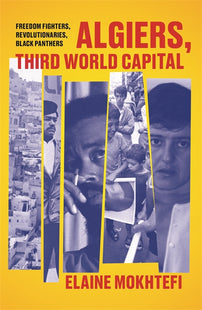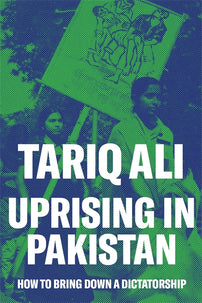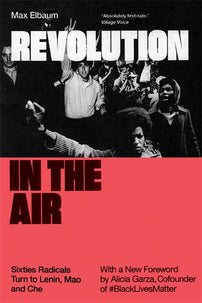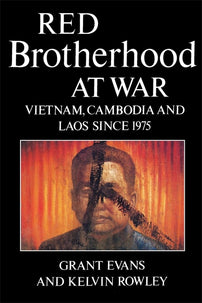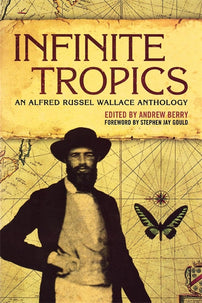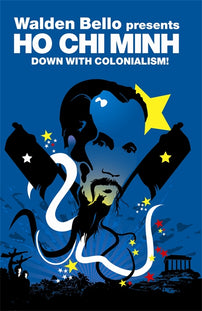Malaysia’s “Second Emergency” (1968–89)
The upsurge of armed struggle in Malaysia represents one of the lesser noticed repercussions of the 1968 developments in Vietnam and China.

The impact of revolutionary developments in Vietnam and China on the May events of 1968 in France and other Western countries has long been acknowledged. Less notice has been paid outside Asia to their repercussions on other Southeast Asian countries, which also experienced a revolutionary high tide in 1968. The upsurge of armed struggle in Malaysia in 1968 is rarely mentioned in general studies on the period, and is not often talked about even in Malaysia.
In 1968, the Malaysian Communists under their ethnic-Chinese leader Chin Peng declared war on the Malaysian government. They kept their insurgency going until 1989, although to increasingly diminishing effect. This armed struggle is generally known as the Second Emergency, following the original “Malayan Emergency ” of 1948-1960. (Malaya united with North Borneo, Sarawak, and Singapore in 1963 to become Malaysia; in 1965, Singapore was expelled from the federation.) At the time, Chin Peng was feared almost as much as Osama bin Laden in later times, and had earlier gained a reputation as “Britain’s enemy number one in Southeast Asia.”
The strategic context of Malaysia’s two Emergencies starting in 1948 and 1968 was the Cold War, which in Southeast Asia took the form of Soviet and Chinese competition with the US-led Western bloc. In the 1960s, the main arena of this competition was Vietnam, where Moscow and Beijing supported the north under Ho Chi Minh against the US-backed south. In Indonesia too Communists staged a rebellion in the 1960s that was crushed by local anti-Communist forces.
The Malaysian insurgency of 1968 had its roots in the 1948 insurrection, which in turn took its inspiration from the interwar anticolonial movement spawned in Asia by the Russian Revolution. The Malaysian population under the colonial regime comprised three main ethnic groups — the indigenous Malays and Chinese and Indian immigrants and their descendants. The Communists drew their support almost exclusively from the Chinese population, which partly explains their failure. The Nanyang Communist Party, reorganized in 1930 (with the help of Ho Chi Minh) as the Malayan Communist Party (MCP), recruited strongly among Chinese students in the colony and established a firm base among the workers, through its industrial arm, the Malayan General Workers’ Union. In 1937, it briefly established a Soviet government of workers among the colony’s miners, sparking a major crisis for the colonial authorities.
After the Japanese invasion of China in 1937, the MCP switched the focus of its work to patriotic issues, including those concerning China and overseas Chinese, and quickly became a formidable political force in the overseas-Chinese community. Following Moscow’s new policy of a united front with democratic forces, announced in 1935, the MCP began to collaborate with the colonial authorities, having previously pursued anti-British policies, and at one point even proposed a formal alliance (which the British rejected). During the war, it played down class issues and instead promoted national resistance. Secretly, however, it maintained its opposition to colonialism and looked forward to Britain’s expulsion from the region.
By 1945, the MCP and its armed forces, the Malayan People’s Anti-Japanese Army (MPAJA), which had fought bravely against the Japanese at a time when the defeated British could do nothing to resist, had several thousand men and women under arms, proportionately far fewer than comparable resistance movements in Asia but relatively well equipped and battle-hardened. The British recognised the MPAJA’s authority and paid its soldiers during the reoccupation. After the war, the MCP pursued a policy of hard bargaining over the terms of the disbandment of its armed units rather than attempt to renew the military insurgency it had waged under Japanese occupation. The MCP, at the time legal and admired for its wartime role, further increased its strength in the colony’s trade-union movement, which grew apace. In 1948, it launched an insurrection, at the same time as Communists in other countries in the region. In June, the British declared a State of Emergency.
The term “Emergency" was used by the colonial government at the request of the local owners of rubber plantations and tin mines, whose losses would not have been covered by insurers in the event of a declared war. The Communists called their military campaign the Anti-British National Liberation War.
The insurgency was eventually defeated. It is thought to have cost the lives of more than six thousand guerrillas in the twelve years between 1948 and 1960, when Chin Peng sued for peace. A main reason for its defeat was its failure to win support among Malays, who made up 49 per cent of the population and supported the government, or even among the 12 per cent made up by Indians. Another was that it received no outside aid. Because of the insurgents’ relative isolation, the British were able to mount a counter-offensive that skilfully combined military blows with political and economic incentives (punctuated by brutal massacres). They were more successful than the Americans in Vietnam in breaking the link between the rebels and the general population, including Chinese, and in defeating the rebels in the battle for public acceptance and even support.
In 1968, Communist forces in South Vietnam staged their Tet Offensive, which resulted in a military defeat but represented a political victory of stunning proportions. The Tet Offensive was a main factor in the CPM’s decision to return to arms and wage a Chinese-style People’s War against the governments of Singapore and Malaysia, which they saw as neo-colonies of the British, and to campaign for a Malayan People’s Republic. Their revolution was designed to chime not just with Vietnam’s War of National Liberation but also with China’s Cultural Revolution, which peaked in 1968.
In the first five years after 1968, the CPM groups set up a secret network of supporters across Malaysia, and in 1974 it began a campaign of bombings and assassinations in both Malaysia and Singapore. Its victims included Tan Sri Abdul Rahman bin Hashim, Inspector-General of the Malaysian Police. Communist guerrillas created a series of strongholds across the border from Malaysia in Southern Thailand. The absence of a concerted Thai-Malaysian response to their activities played into the hands of the CPM, which profited from the two governments’ failure to cooperate effectively.
The insurgency, spearheaded by the Malayan National Liberation Army, took the form of a campaign of subversion in Singapore, where the Communists sought to capture power through a united front strategy combined with bombings and acts of arson, and of sporadic jungle fighting in Malaysia. In Malaysia, the insurgents sought the backing of poor and landless Malays and Chinese and accused the government of putting the country’s wealth and resources at the disposal of foreign conglomerates and the tiny Malay elite.
By 1988, the CPM had been defeated on most fronts and lost its civilian support. Why did the insurrection fail? In northern Malaysia and along the Thai border, Communist veterans from the earlier war had at first won a string of important battles against government security forces. In the long term, however, the CPM was unable to overcome its inherent disunity, and by 1974 it had split into several factions that waged separate and wasteful military campaigns against both the government and each other, to the dismay of their civilian supporters. Once again, they failed to win support among rural Malays and other indigenous peoples, and their internecine violence even alienated their core supporters among the Chinese. Like the British before them, the Malaysian authorities supplemented military force with policies that fostered a measure of economic development.
In Malaysia, the CPM failed as a result less of the military prowess of the government’s security forces than of its own failure to win over key sections of the population outside its jungle strongholds in Southern Thailand. In Singapore, its revolutionary message failed to get across because of the government’s achievement of rapid economic growth, prosperity, and social mobility, despite a marked diminution of personal and political freedoms. Its terror tactics alienated potential supporters.
The CPM suffered greatly as a result of the deepening of the Sino-Soviet split. As China’s relations with the Soviet Union worsened, Beijing began a process of rapprochement with its non-communist neighbours to the south, as a counterweight to its troubles in the north. As part of this process, the Chinese leader Zhou Enlai announced in 1974 that Beijing would henceforth consider the CPM to be an internal problem for Malaysia, thus signaling the start of Beijing’s withdrawal of support. This move coincided with changes in Malaysia’s foreign policy, from a pro-Western stance to one of relative neutrality, which led to a muting of the CPM’s denunciations of Malaysia as a neo-colony of the West. In 1980, Deng Xiaoping went further, pledging to end all material support for Communists in Southeast Asia and moving towards the establishment of bilateral relations with governments in the region.
The CPM continued radio broadcasts from China to Malaysia and Singapore until 1981, but its influence waned steadily, as Communist ideology and economic influence in the region continued its decline. The final blow to Chin Peng’s ambition was the fall of the Berlin Wall in 1989. In December 1989, the CPM agreed to sue for peace, and signed separate peace treaties with the Malaysian Government and Thailand’s military command. In 1990, the guerrillas in Sarawak (a Malaysian state on the island of Borneo) laid down their arms, thus bringing the Second Emergency to an end on all fronts.
In his memoirs, Chin Peng claimed that the CPM had won “peace with dignity” — a “reasonable conclusion” to the struggle. However, he also acknowledged that the MCP’s terror campaign had been a mistake, for it had “antagonized the masses.” He went on to outline the domestic and international conditions that had prevented the spread of revolution in the Malay Peninsula and Borneo: “A revolution based on violence has no application in modern Malaysia or Singapore. None of the conditions favourable to armed struggle exist today in relation to these territories. You need complementary international and internal situations to set hearts burning for armed revolt. If the people lead reasonable lives and feel accepted in society, how can you ask them to put their lives on the line?”
Gregor Benton is emeritus professor of Chinese history at Cardiff University and research associate in diaspora studies, NTU, Singapore.
[book-strip index="1" style="display"]
